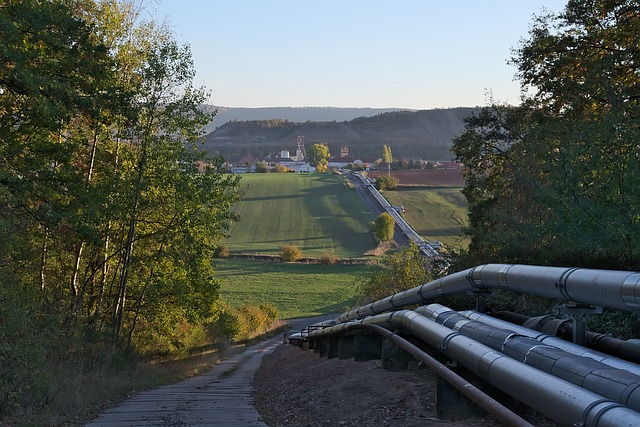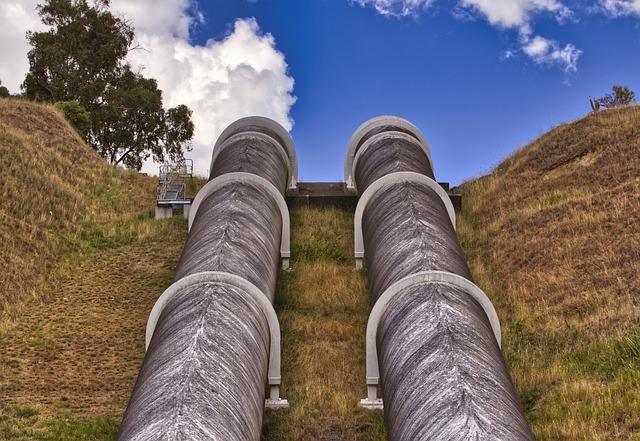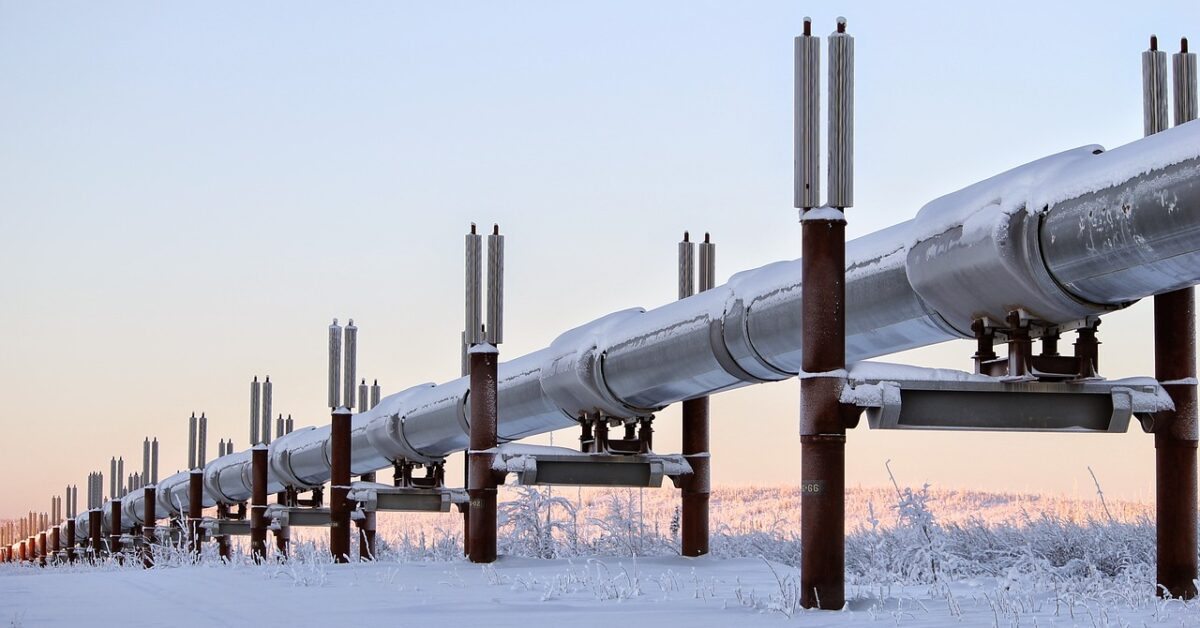The oil and gas industry is pivotal when it comes to powering the modern world. An intricate infrastructure network is required to safely and efficiently transport these valuable hydrocarbon resources from production sites to end users.
This extensive system includes various types of pipelines and flowlines, each specifically designed to serve particular functions, handle different substances, and address unique operational challenges. A comprehensive understanding of the distinctions between these crucial components is essential for ensuring the entire hydrocarbon transportation network is a safe, efficient, and environmentally responsible operation.

via Pixabay
In this article, we will be exploring the five types of oil and gas pipelines, including the differences between them, their various uses, and the materials needed to construct them. This is essential knowledge for anyone working in the oil and gas industry, but it is especially crucial for civil and environmental engineers to understand these distinctions.
The 5 Types of Pipelines
Pipelines facilitate the efficient transportation of various materials, such as oil, gas, and water over long distances. There are several types of pipelines, each serving a distinct purpose in the transportation process.
In the field of oil and gas, there are five main types of pipelines that we will be discussing in this text: gathering pipelines, transmission pipelines, distribution pipelines, flowline pipelines, and feeder pipelines.
Gathering Pipelines
The first stage in the transportation process is gathering. As you might guess from their name, gathering pipelines collect raw materials from their source. These pipelines are typically found in oil and gas fields, transporting extracted resources from the wellhead to processing facilities or larger transmission pipelines.
Gathering pipelines are often shorter and smaller in diameter than other types and they operate with a lower flow and pressure. Still, they play a crucial role in ensuring the efficient transportation of resources and they make the first step in oil and gas harvesting possible.
Transmission Pipelines
Transmission pipelines are the backbone of the transportation process, moving large quantities of materials over vast distances. These pipelines are designed to handle high pressure and are typically larger in diameter than other types, which enables them to transport a substantial volume of material.
Transmission pipelines connect production areas to refineries, storage facilities, or distribution pipelines, ensuring a seamless flow of resources throughout the network.
Distribution Pipelines
Distribution pipelines deliver materials to end-users, such as homes, businesses, and industrial facilities. Distribution pipelines are typically smaller in diameter than transmission pipelines and operate at lower pressures, which ensures the safe delivery of materials to consumers.
These pipelines are often found in urban areas, forming a network of interconnected lines allowing efficient resource distribution. Distribution pipelines, transportation pipelines, and gathering pipelines are often considered the three links of the pipeline chain. However, there are two other types worth mentioning here.
Flowline Pipelines
Flowline transports materials between different stages of the production process. These pipelines can be found in oil and gas fields, connecting wellheads to gathering pipelines or moving materials between various units within processing facilities.
Flowlines are designed to handle varying pressure levels and may change in diameter to accommodate fluctuations in the flow rate of materials. Together with feeder pipelines, they make up the behind-the-scenes network of pipelines powering the standard trio: gathering, transportation, and distribution.
Feeder Pipelines
Feeder pipelines connect various components of the pipeline network, such as storage facilities, refineries, and distribution pipelines. These pipelines are essential for maintaining a consistent flow of materials throughout the system, ensuring that resources are available when and where they are needed.
Feeder pipelines can vary in size and pressure levels, depending on their specific function within the network.
Pipelines play a critical role in the transportation of resources, with each type serving a unique purpose within the process. From gathering and transmitting materials to distributing them to end-users, pipelines ensure the efficient and safe movement of resources worldwide.
What Types of Materials Are Used in Oil and Gas Pipelines?
 via Pixabay
via Pixabay
Pipeline materials play a crucial role in determining the efficiency, safety, and durability of the infrastructure used for transporting various substances. The selection of materials is influenced by factors such as the pipeline’s design, internal and external forces, jointing and laying techniques, durability, impermeability, and maintenance frequency.
Plastic Pipelines
Plastic pipelines are often used for the transmission of water over long distances. They are resistant to abrasion and chemical influence and are easy to handle. Additionally, their lightweight nature makes installation and alignment easy. However, plastic pipelines have low tensile strength and may not perform well in fluctuating temperatures. They are much less common in the oil and gas industry.
Petroleum Oil Pipeline
Oil pipelines are steel-made, featuring external coatings and cathodic protection to minimize external corrosion. They are joined by welding and can transport crude oil to refineries or refined products like gasoline to the market.
Gas Pipeline
Gas pipelines are an efficient and practical means of transporting natural gas over land. Gas collection and transmission lines are steel, while most distribution lines use flexible plastic pipes that are easy to lay and do not rust.
Steel Pipeline
Steel pipelines are used for oil, gas, and water transportation. Because steel can be used to create large, sturdy, wide-diameter pipes that can carry materials over long distances, this is a very effective and versatile choice of material.
Water Pipeline
Water pipelines transfer water from treatment plants to buildings, typically installed underground. They can be made from steel, ductile iron, or concrete.
Wastewater Pipeline
Wastewater pipelines transport wastewater mainly consisting of water and a small percentage of solid waste. Depending on the pressure and other conditions, these pipes can be made from concrete, PVC, cast iron, or clay.
Cast Iron Pipeline
Cast iron pipes, traditionally made from gray cast iron, are coated and lined to improve corrosion resistance. While widely used in the past, ductile iron pipes, which are superior to cast iron pipes, are becoming more popular. These pipes are suitable for transmitting water, gas, and sewage.
Concrete Pipeline
Concrete pipes are manufactured using welded sheet steel with jointing surfaces and concrete. They are suitable for large-diameter pipelines extending over great distances and are an ideal choice for water transmission.

via Pixabay
What is the Difference Between Oil and Gas Pipelines?
Oil and gas pipelines serve as critical infrastructure for the transportation of hydrocarbon resources. Despite sharing some similarities, there are several key differences between oil and gas pipelines in design, construction, and operation.
Design and Materials
Both oil and gas pipelines are primarily constructed from steel, but the choice of materials and design can differ based on the substance being transported. Gas pipelines, especially distribution lines, often use flexible plastic pipes that are easy to lay and corrosion-resistant.
In contrast, oil pipelines require external coatings and cathodic protection to reduce external corrosion, as they are typically made of steel.
Pressure and Temperature
Gas pipelines usually operate at higher pressures than oil pipelines, as natural gas needs to be compressed to reduce its volume and increase transportation efficiency. This requires gas pipelines to be designed to withstand higher internal pressures.
Additionally, oil pipelines may need to handle higher temperatures due to the nature of the transported liquid, which could affect the choice of materials and insulation.
Leak Detection and Monitoring
Leak detection and monitoring are crucial for oil and gas pipelines, but the methods employed may vary. Gas leaks can be detected using pressure monitoring, gas detection sensors, or even odorants added to the gas, making it easier to identify leaks by smell.
Oil leaks, on the other hand, can be identified using flow monitoring, pressure monitoring, and visual inspections.
Environmental Impact
Both oil and gas pipelines can have significant environmental impacts, particularly in the event of leaks or spills. However, the consequences of an oil spill can be more severe and long-lasting, as oil is not easily dispersible and can contaminate soil, water, and ecosystems.
Gas leaks, while still harmful, tend to dissipate more quickly and are less likely to cause long-term environmental damage.
Although oil and gas pipelines share similarities in their purpose and basic construction, there are notable differences in design, materials, pressure and temperature requirements, leak detection methods, and environmental impacts. These differences must be carefully considered when planning, constructing, and maintaining transportation systems.
What is the Difference Between Flowline and Pipeline?
Flowlines and pipelines are essential for the oil and gas transportation infrastructure. While they share a common purpose of transporting hydrocarbons, there are notable differences between them in terms of their function, location, and design.
Function and Location
Flowlines are primarily used within oil and gas production facilities or fields to transport extracted resources between different stages of the production process. They connect wellheads to gather pipelines or move materials between various units within a processing facility.
In contrast, pipelines are more extensive networks transporting materials over long distances, connecting production areas to refineries, storage facilities, or distribution pipelines.
Diameter and Pressure
Flowlines are designed to handle varying pressure levels and may change in diameter to accommodate fluctuations in the flow rate of materials. They are typically smaller in diameter compared to long-distance pipelines, as their main function is to facilitate the movement of hydrocarbons within a localized production facility or field.
Pipelines, particularly transmission pipelines, are larger in diameter and designed to handle higher pressures to transport substantial volumes of materials over vast distances.
Flexibility and Adaptability
Flowlines are often more adaptable to the specific requirements of a production facility or field, as they can be customized to handle different pressure levels, flow rates, and substances. In contrast, pipelines are designed with more standardized specifications to transport materials efficiently over long distances.
Maintenance and Monitoring
Due to their localized nature, flowlines can be more easily accessed for maintenance and monitoring than pipelines, which extend over vast distances and may traverse challenging terrain. However, flowlines and pipelines require regular inspection, maintenance, and monitoring to ensure their safe and efficient operation.
Flowlines and pipelines play distinct roles within the oil and gas transportation infrastructure. Flowlines are focused on facilitating the movement of hydrocarbons within production facilities or fields, while pipelines are responsible for transporting materials over long distances.
Understanding the differences between these two components is crucial for the safe and efficient operation of the entire hydrocarbon transportation network.
Final Thoughts
The oil and gas industry’s complex transportation infrastructure is vital in delivering hydrocarbon resources efficiently and safely. Understanding the distinctions between oil and gas pipelines and flowlines and pipelines is essential for effective operation, maintenance, and environmental stewardship.
By recognizing these systems’ unique design, materials, and operational demands, stakeholders can better manage and optimize the transportation network, ensuring a reliable energy supply while minimizing potential hazards and environmental impacts. This knowledge is crucial for navigating the challenges of the ever-evolving energy landscape.





